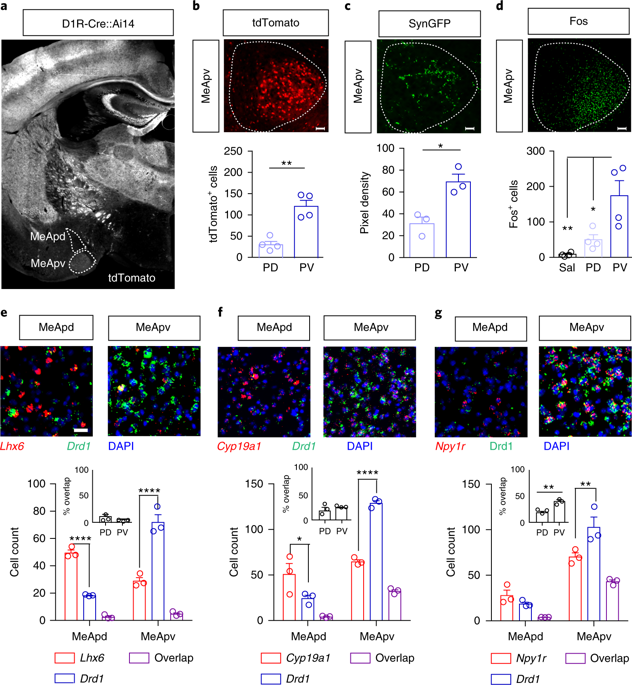Nature Neuroscience ( IF 21.2 ) Pub Date : 2019-02-25 , DOI: 10.1038/s41593-019-0337-z Samara M Miller 1 , Daniele Marcotulli 1, 2 , Angela Shen 3 , Larry S Zweifel 1, 4

|
Avoidance of innate threats is often in conflict with motivations to engage in exploratory approach behavior. The neural pathways that mediate this approach–avoidance conflict are not well resolved. Here we isolated a population of dopamine D1 receptor (D1R)-expressing neurons within the posteroventral region of the medial amygdala (MeApv) in mice that are activated either during approach or during avoidance of an innate threat stimulus. Distinct subpopulations of MeApv-D1R neurons differentially innervate the ventromedial hypothalamus and bed nucleus of the stria terminalis, and these projections have opposing effects on investigation or avoidance of threatening stimuli. These projections are potently modulated through opposite actions of D1R signaling that bias approach behavior. These data demonstrate divergent pathways in the MeApv that can be differentially weighted toward exploration or evasion of threats.
中文翻译:

发散的内侧杏仁核投射调节接近 - 避免冲突行为
避免先天威胁往往与进行探索性接近行为的动机相冲突。调解这种方法的神经通路 - 避免冲突没有得到很好的解决。在这里,我们在小鼠内侧杏仁核 (MeApv) 的后腹侧区域分离出一组表达多巴胺 D1 受体 (D1R) 的神经元,这些神经元在接近或避免先天威胁刺激期间被激活。MeApv-D1R 神经元的不同亚群不同地支配下丘脑腹内侧和终纹床核,这些预测对调查或避免威胁性刺激有相反的影响。这些预测是通过 D1R 信号的相反动作来有效调节的,这些信号偏向接近行为。































 京公网安备 11010802027423号
京公网安备 11010802027423号